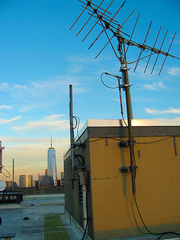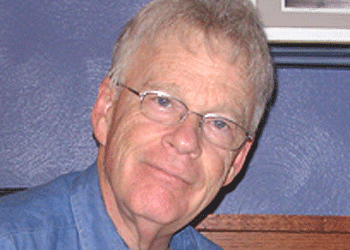From the NERW Archives
Yup, we’ve been doing this a long time now, and so we’re digging back into the vaults for a look at what NERW was covering one, five, ten, fifteen and – where available – twenty years ago this week, or thereabouts.
Note that the column appeared on an erratic schedule in its earliest years as “New England Radio Watch,” and didn’t go to a regular weekly schedule until 1997.
One Year Ago: November 24, 2014
The last time the good people of Buffalo faced down a paralyzing snowstorm – and it takes a lot of snow to paralyze Buffalo – the year was 1977 and radio was king. Over the course of that ordeal, there was probably not a single Buffalonian who wasn’t locked in to either of the city’s powerhouse full-service stations, WKBW or WBEN. Sure, Buffalo’s TV stations rose to the occasion back then, too, but with many would-be viewers lacking power and nonstop live shots still a few years in the future, it was radio first and foremost that bound the people of western New York together. (The indispensable Steve Cichon, as always, has a page for that.)
Flash forward 37 years to the snow that just kept falling and falling and falling over Buffalo’s southern suburbs last week. In some ways, Buffalo broadcasters got very lucky: the very localized nature of lake-effect snowfall meant that most of the city’s radio and TV studios were outside the snow belt and accessible to at least some staffers, as long as they weren’t trying to commute from the inaccessible Southtowns. WBEN’s transmitter site on Grand Island got almost no snow at all, and the TV transmitter sites in the very snowy hills south of town stayed powered up even when nobody could get to them. (The site shared by WKBW’s successor on 1520, WWKB, and WGR 550 was also inaccessible in Hamburg. 1520 was silent for most of the week, not that it would have broken from its ESPN feed anyway, and that’s a sad coda to its long-ago heyday.)
Power and internet stayed on for most customers, even in the hardest-hit areas, and so broadcasters didn’t have this storm all to themselves. Unlike 1977, when battery-powered radios were the only lifeline for many Buffalonians, this storm was as much a TV event and a social-media event, with many of the most dramatic pictures from the snow zone flowing from Facebook and Twitter to TV stations that couldn’t get crews into the worst-hit areas.
Staffers who could get into the city pulled extra shifts at the TV stations and the radio clusters, covering for those who were snowed in or still under travel bans. At Cumulus, for instance, WHTT 104.1 afternoon jock Joe Siragusa was stuck at home, with swing/weekend guy Brian Walker covering his shifts most of the week. WBEN’s Amherst studios were well outside the snow zone, but most of its newsroom staffers live in the Southtowns. With the storm coming, staffers holed up in nearby motels or with family in the Northtowns, and so they found themselves covering the storm without being able to get home to see how badly their own residences were affected. Public radio WBFO (88.7) was a big player, too, with new news director Brian Meyer starting off his tenure by overseeing coverage that frequently preempted NPR’s national programming (though NPR, in turn, made frequent use of WBFO voices.)
On TV, all three of the city’s newsrooms went wall-to-wall for much of the week, and after all the criticism third-place ABC affiliate WKBW-TV (Channel 7) drew over the summer for focusing its morning show primarily on weather and traffic, was this the story that proved new owner Scripps Howard made the right decision?
Even if the coverage was sometimes over the top, former WBEN news director Steve Cichon nicely summed up the importance of the public service broadcasters provided:
While there are elements of the coverage today which make many of us crazy and shake our heads, this is the sort of day that the media performs a public service and saves lives. It might be a year or two of total BS stories, but if you can’t feel satisfied or accomplished on a day when you’re telling people not to drive because they could get stuck and die… to keep people who might be scared or lonely company… to show them the 4 feet in someone else’s yard while they have sunshine, and maybe stop them from bad decisions… Then I don’t know why the hell anyone would do this, save a pay check. And I can think of all kinds of easier ways to make a buck than this.
And that brings us to a few words about preparation: as our colleague Howard Price, ABC’s director of business continuity, constantly preaches, you can never be too prepared for an emergency like this one. Even if you’re not in an area that routinely sees as much bad weather as Buffalo, does your station have plans for housing and feeding essential staffers if they can’t get back and forth to their homes? How will those staffers’ families be taken care of if staff members can’t get home? Do you have contacts in law enforcement to ensure that your news crews can legally be out on the streets even if a driving ban is imposed, as it was in much of the Buffalo area? And if they are, can they get fuel if gas stations are closed? (That turned out to be a very big issue for stations in New York City during Hurricane Sandy’s aftermath.) In an era when less and less equipment is repaired on site, because you can always get a replacement module shipped in overnight, what happens when something breaks and shipping is cut off for days on end? Or when the fuel tank for the generator starts running low and the road to the transmitter site is under 7 feet of snow?
It’s been widely reported (including here), but now it’s a done deal: three years after exiting the NEW YORK City market with the sale of its WFME (94.7 Newark NJ) to Cumulus, Family Stations is coming back with the purchase of Radio Disney’s WQEW (1560). After pulling in $40 million from Cumulus (plus what’s now WFME-FM 106.3 Mount Kisco in the far northern suburbs, Family will pay $12.95 million for the 50,000-watt AM signal. That’s a steep drop from the $40 million Disney had paid to acquire WQEW from the New York Times Company back in the headier marketplace of 2007. There’s no LMA in the deal, so Disney programming is expected to continue on 1560 until it closes, at which point 1560 will shift from a commercial to a noncommercial license.
Five Years Ago: November 22, 2010
The new year will bring a talk radio shakeup in southeastern PENNSYLVANIA, where CBS Radio’s WPHT (1210 Philadelphia) will rearrange its schedule to move morning man Michael Smerconish to afternoons, dropping Glenn Beck and Sean Hannity as “The Big Talker” segues to a nearly all-local lineup during the day.Over the last couple of years, Smerconish has become one of the hardest-working hosts in talk radio, holding down both a local airshift on WPHT in morning drive and a syndicated midday airshift, all while writing newspaper columns and becoming increasingly visible on cable TV news. (Last week, for instance, he guest-hosted MSNBC’s “Hardball” all week.)
“I have zero regrets from the last two years, but as I expected, it is just too much and I am looking forward to applying a renewed sense of focus to one show daily. I am also anxious to watch Phillies games beyond the 5th inning and no longer get up at 3:30 a.m.!,” said Smerconish in a statement announcing his plans to cut down from his current seven hours of live talk daily (the Philadelphia morning show and a noon-3 PM national show syndicated by Dial Global.)
The January schedule shift will reduce Smerconish’s workload to four daily hours of radio talk: one local-only hour from 3-4 PM followed by his syndicated show, delayed from its live midday slot to 4-7 PM. Moving Smerconish to afternoons on WPHT will displace Hannity, and current nighttime talker Dom Giordano will move to 9 AM-noon, replacing Beck. There’s a new morning voice coming to WPHT as well: Chris Stigall, who’s now the morning host at Entercom’s KCMO (710) in Kansas City, will be the new leadoff man in the “Big Talker” lineup. Out of WPHT’s present daytime syndicated lineup, only Rush Limbaugh will stay in place.
130 unionized employees at NEW JERSEY’s statewide NJN radio and TV network received layoff notices last week, the next step in Gov. Chris Christie’s plan to end the state’s operation of the public broadcaster by year’s end. It’s still not at all clear what will become of NJN’s operations after December 31. It’s still not at all clear what will become of NJN’s operations after December 31.
Late last week, state officials met with nonprofit funders and public broadcasting experts to try to map out a future for NJN that would meet Christie’s dual (and potentially contradictory) goals of eliminating state spending on public broadcasting while preserving NJN’s local programming and possibly even retaining some measure of state control over the networks.
While it’s widely believed that New York-based WNET and Philadelphia-based WHYY are likely candidates to take over operation of NJN’s TV service, there are other options on the table as well: some lawmakers are suggesting spinning off NJN’s less-than-statewide radio service while retaining TV, while others support the transfer of both radio and TV to a consortium that would be run by Stockton College and Montclair State University. (That option, however, would simply shift the state”s responsibility for NJN from direct funding to indirect support through the state college system.)
Will NJN in fact go dark? At week’s end, state officials were trying to downplay that possibility, saying the Dec. 31 deadline to end the state’s operation of the networks could be pushed back if there’s a plan in place for NJN’s future.
There are few people working in radio or TV in MASSACHUSETTS with as much media experience as Paul LaCamera. Son of famed Boston Record-American TV critic Anthony LaCamera, Paul began his career at that newspaper before moving into television, where he joined WCVB-TV (Channel 5) at its launch in 1972. LaCamera spent 33 years working his way up the management ranks at Channel 5, eventually serving for a dozen years as the station’s president and general manager and drawing acclaim for running one of the finest local TV stations in the country.
LaCamera retired from WCVB in 2005, only to start a new chapter in his career by taking over as general manager of WBUR-FM (90.9) later that year, charged with restoring stability to a station buffeted by the turbulent ouster of longtime leader Jane Christo.
And after five years at that job, during which he”s been widely credited with bringing WBUR back on an even keel, LaCamera announced Friday afternoon that he’s ready to retire for real. At age 67, he tells the Boston Globe it”s time for fresh leadership at WBUR: “I am a guy who loves newspapers and kitchen radios, and that’s not necessarily the kind of leadership that WBUR is going to need in the future.”
Ten Years Ago: November 21, 2005
It was a busy week for CANADA’s regulators, as they denied a closely-watched TV application and announced hearings on several radio applications, including three in the nation’s biggest market.
The denied application was TV Niagara’s, for a new independent station that would have broadcast on channel 22 from a site near St. Catharines, Ontario, from which it would have served not only Niagara Region itself but also the rest of the “Golden Horseshoe” around the western end of Lake Ontario, including Toronto. In turning down TVN’s application, the CRTC said it was concerned that the company hadn’t budgeted enough to pay the costs of operating a TV station with the ambitious schedule it proposed, including some 36 hours a week of local news and prime-time movies. In particular, the CRTC cited the experience of the former Toronto One (now SUN-TV), which debuted with similar ambitions a few years back and ran into devastating financial problems that eventually led owner Craig Media to be sold.
NERW suspects we haven’t heard the last of the TV Niagara folks, though; they’ve already told the CRTC that they believe they can run a more economical operation than Toronto One did, and they have a compelling case to make for the relatively underserved nature of Niagara, in the shadows of the much larger Toronto/Hamilton and Buffalo markets.
That was just one piece of a busy week at the CRTC, though. It approved the move of CKDO (1350 Oshawa) to 1580, which will allow the oldies outlet to go from 10 kW day/5 kW night (with a fairly tight directional pattern) to 10 kW fulltime on a Canadian clear channel. (1580 was long occupied by CBJ in Chicoutimi, Quebec, and was later applied for by CHUC Cobourg, which instead is moving to FM.)
Away from the halls of the CRTC, there’s other news to report as well. In Toronto, French community station CHOQ (105.1) is testing its signal from its new transmitter site at 6 Forest Laneway. “Radio-Toronto” began testing November 7 and will wrap up the tests November 28, in preparation for beginning regular programming soon. (It’s been on the air under the CKIE calls for several short-term special event broadcasts already.)
Moving stateside, NEW YORK got Christmas music in earnest this week – both in the west, where Buffalo’s WJYE (96.1) and WTSS (102.5) made the flip, and in the city, where WLTW (106.7 New York) made its earliest flip yet. WLTW also lost one of its longest-running voices, as the station parted ways with Steven E. Roy, who was there at the beginning, in 1984, and who’d become an afternoon fixture at “Lite.” There’s no word yet on a permanent replacement, or on Roy’s next destination.
In NEW JERSEY, mornings are a little less local at WBUD (1260 Trenton), as the Millennium Radio Group station sheds the services of news guys John Weber and Ed Salvas. WBUD says it plans to continue its “Mercer News Morning” block, but we’re hearing that Weber and Salvas won’t be replaced, and that the future for WBUD is more satellite and less local (even the local voicetracking that the station’s been running.)
In MASSACHUSETTS, Michael Graham’s settling in as the new afternoon talker on WTKK (96.9 Boston), filling the slot last occupied by Jay Severin, whose future whereabouts on the Boston dial remain up in the air. Graham’s last two gigs didn’t end well – he was driven out of WMAL, Washington earlier this year after controversial remarks about Muslims, and he was fired from WBT, Charlotte a few years earlier after some tasteless remarks about the Columbine shootings. Will he fare any better in Boston – or is that sort of high-profile controversy exactly what WTKK is banking on?
Fifteen Years Ago: November 20, 2000
Just in time for Thanksgiving, the radio waves of Western NEW YORK have brought forth a cornucopia of news…and where better to begin than at the far western extreme of the NERW listening area, out in the Jamestown area? That’s where WKZA (106.9 Lakewood) hit the air over the weekend, with a signal being heard as far north as the Buffalo suburbs.
Meanwhile in Buffalo, the on-again, off-again sale of WNEQ (Channel 23) is again very much “on,” and this time in a way that promises to avoid the earlier legal problems encountered by the seller, the Western New York Public Broadcasting Authority. This time, the buyer is LIN, parent company of Buffalo’s CBS affiliate, WIVB (Channel 4). LIN plans to move channel 23 to WIVB’s North Buffalo studios and program it as a commercial independent, complete with a WIVB-produced 10 PM newscast. More on those plans in a moment — first a bit of history: WNYPBA put WNEQ on the air in May 1987 as a second outlet, to complement existing public TV station WNED-TV (Channel 17). A decade or so later, though, the impending costs of the digital TV conversion at WNED (not to mention the debt load of WNED’s palatial new downtown studio complex) led WNYPBA to put the second station up for sale. Sinclair Broadcasting stepped forward, offering $33 million for the station in May 1998. WNEQ would have become the duopoly partner to Sinclair’s Fox affiliate, WUTV (Channel 29) — but instead, the deal ended up facing a serious challenge, thanks to the unusual licensing arrangement for Buffalo’s public broadcasters. WNED, the primary station on channel 17, actually operates on a commercial allocation, a vestige of its 1950s past as NBC O&O WBUF(TV). When NBC shut down its UHF experiment, it donated channel 17 to what became WNYPBA, but the channel remained commercial. In order to sell WNEQ, on the noncommercial-reserved channel 23, WNYPBA needed to persuade the FCC to move the noncommercial reservation from channel 23 to channel 17, turning 23 into the commercial channel. It may sound like a bunch of legal minutiae, but it took the FCC over a year to approve the move, and appeals from concerned WNEQ viewers now have that approval tied up in federal court. The uncertainty, coupled with Sinclair’s own financial problems, brought the Sinclair sale to an end last year. (A few months later, Sinclair instead bought WB affiliate WNYO (Channel 49), for $51.5 million.)
Which brings us back to LIN and its WNEQ purchase. Here’s how it works: Sometime soon (perhaps as early as January, speculates the Buffalo News), LIN will begin leasing channel 23 from WNYPBA. Once the lawsuit over channel 23 is resolved, LIN will pay $26.2 million, in two annual installments, for WNEQ (less whatever amount it’s already paid in lease fees). And here’s the kicker: If WNED loses the lawsuit and channel 23 has to stay noncommerical, WNYPBA will instead sell WNED’s channel 17 to LIN, bumping the sale price up to $31.2 million for the stronger signal. (That’s OK, WNYPBA president Don Boswell tells the News, because with DTV the present channel assignments will disappear anyway…though NERW notes that most stations will continue using their NTSC channels as a “virtual” channel number.)
A final historical note: If LIN does end up with channel 17, it will close a forty-year circle in Buffalo broadcasting history. The present WIVB studios at 2077 Elmwood Avenue were built in the late 1950s by NBC, as a state-of-the-art studio for none other than WBUF-TV 17! When WBUF folded, the building sat vacant for several years before becoming the home of channel 4, then WBEN-TV. The tower out back served as the channel 17 tower for years, until the current WNED/WNEQ site on Grand Island was built.
With that, we move on to Elmira, where the city’s oldest radio station is picking up stakes and moving its studios down the road to Corning. WENY (1230) and WENY-FM (92.7) are joining Eolin Broadcasting’s four stations (WCBA AM-FM, WCLI, and WGMM) at the “Radio Works” facility on Davis Road beginning next Monday (Nov. 27). In the process, they’ll drop their current formats (oldies on the AM, soft rock “Y 92-7” on FM) and begin simulcasting two of the Eolin outlets. WENY(AM) will join WCLI (1450) as “Two-Way Radio for the Twin Tiers,” with a mostly-satellite talk format. On the FM side, WENY-FM will simulcast WCBA-FM (98.7)’s AC format as the “Elmira-Corning Crystal Network,” with WCBA-FM’s Jack and Bob in the morning.
We’ll leave New York with an interesting rumor: AllAccess says, quoting M Street, that WEVD (1050) could be near an $85 million sale — and the buyer isn’t Clear Channel or Infinity. (NERW wonders: could it be ABC and “ESPN Radio 1050,” following on ABC’s recent buy of LA’s KRLA?)
On we go, to VERMONT and the launch of a new oldies station. You read it here first (NERW, 10/16/2000): the former WGLV (104.3 Hartford) has moved from its interim sports format (simulcast with sisters WNHV 910 and WTSV 1230) to oldies, under the calls WWOD, “Oldies 104.”
Across the river in NEW HAMPSHIRE, Bob Vinikoor has flipped his WNTK (1020 Newport) from talk to what he’s calling “Home Town Music,” a mix of classic country, folk, and blues. Fredie Dee is doing mornings on the station, while Rush Limbaugh continues to be heard from 12 to 3, simulcast with WNTK-FM (99.7 New London), where the talk format lives on.
One story, and one only, from CANADA this week: The AM 1220 outlet in Cornwall, Ontario, vacant since June 1999, is back on the air testing. 1220 was CJSS, but that station and its country format moved to FM (as “101.9 the Blaze”), leaving in its wake an application by owner Tri-Co Broadcasting for a “new” adult standards outlet. To be known as CJUL, “the Jewel,” the new 1220 will reportedly make its official debut Thursday (Nov. 24), and we’re told personalities such as Jack Curran and Chuck Phillips (of Montreal’s defunct CIQC) will be part of it.
Twenty Years Ago: November 18, 1995
As expected, the CBS shareholders voted overwhelmingly (99.5% yes) to approve the $5+ billion purchase by Westinghouse. The only remaining hurdle is FCC approval of the transfer of the CBS broadcast licenses…and THAT will have to wait for the FCC to reopen. The New England implications come here in Boston, where Westinghouse will add CBS’s WODS-FM (“Oldies 103”) to its WBZ(AM) and WBZ-TV. Additionally, Westinghouse will get CBS’s newly-purchased WPRI-TV Providence RI, and I believe a minor waiver will be needed because of the overlap between WBZ-TV and WPRI-TV. The most immediate consequence of the transaction will be the disappearance of the “Group W” name after four decades. The entire group of 39 radio stations and more than a dozen TVs will be known as CBS. This is going to take some getting used to… (inevitable disclaimer — I work for Group W, I mean, CBS, but I do not speak for them).
A bit less local programming these days on Boston’s business station, WBNW 590 (simulcast on WPNW 550 Pawtucket RI), as Jeannine Graf has departed her 1-3 pm “New England Business” program. Graf says she simply chose not to renew her contract. The program has been replaced by the Dolans from the WOR Network. |







 It’s still not at all clear what will become of NJN’s operations after December 31.
It’s still not at all clear what will become of NJN’s operations after December 31.




